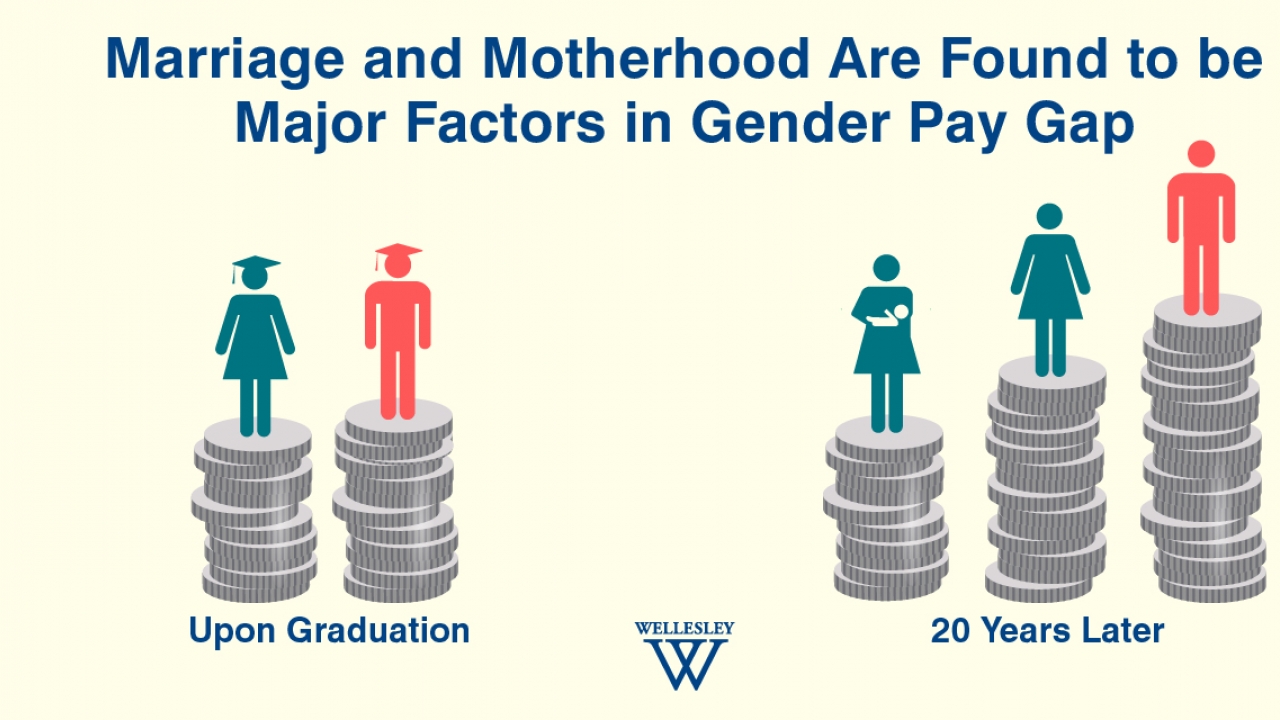Marriage and Motherhood Cited as Major Causes of Gender Pay Gap in Two New Studies Co-Authored by Wellesley College Economist

The salaries of men and women are roughly similar when they complete college and enter the workforce in their early 20s, though men still make 10 percent more. However, a larger gender pay gap soon appears, and widens significantly over the next 10-20 years.
Two new studies co-authored by Sari Pekkala Kerr, visiting lecturer in economics at Wellesley and senior research scientist at the Wellesley Centers for Women show that this gap occurs when women marry and are inclined to have children in their late 20s and 30s. The studies show that these women end up making significantly less than men. And, she said, even single women without children earn markedly less than what men earn.
Kerr told The New York Times that one of the primary reasons having kids, and even marrying in the first place, adversely impacts women’s pay is that the division of labor at home is still unequal, even when both parties work full time.
“The research shows that one person focuses on career, and the other one does the lion’s share of the work at home,” Kerr said, adding that her research shows employers pay all married women less than men in similar positions, assuming they will have children and therefore be less committed to their jobs.
Kerr said that “being married with children” tends to disproportionately affect the careers of college-educated women in high-earning professions, because some women work less once they have children.
“The data show that college-educated women make about 90 percent as much as men at age 25, and considerably less, only about 55 percent as much, at age 45,” said Kerr, who added, “and even single women end up making 25 percent less than their male counterparts.”
One of Kerr’s studies will be published in the American Economic Review this month; the other was already published earlier this month as a working paper by the National Bureau of Economic Research. This working paper found that for people born around 1970, nearly all the pay gap for college graduates came from ages 26 to 33.
Kerr and her co-researchers used demographic data from the 2000 census and work history from 1995 to 2008 from the Census Bureau’s program that covers private-sector companies. The two data sets have rarely been combined, which allowed researchers to connect people’s work histories with demographic data such as age, education, marriage, and childbirth.
However, Kerr pointed out that having children is certainly not the only reason for the big wage gap. Another important factor is related to women’s over-representation in so-called "pink-collar" occupations, such as retail, personal services, teaching, and nursing, where the pay is less and the career advancement prospects are lower.
Kerr explained that the next phase of her research will focus specifically on how motherhood affects the earnings dynamics within the household.
Kerr said there are some recent examples of promising policies that could even out the child-care burden and household work among spouses. “For example, in 2015, Sweden introduced a policy that requires both mothers and fathers to share the paid family leave more equally,” she said, “and we should soon be able to see in the data how that has affected the gender pay gap among married individuals.”



